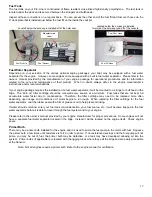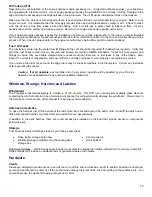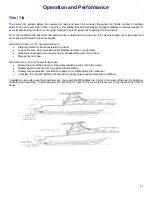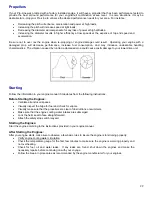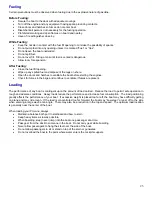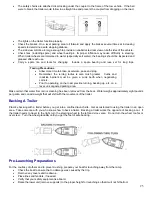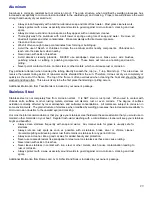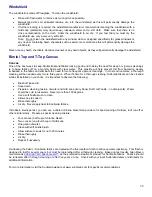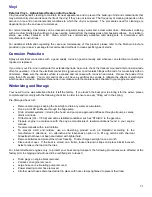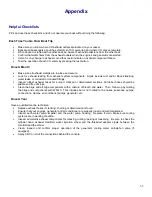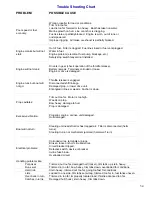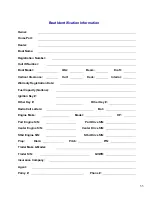
31
Vinyl
Exterior Vinyl – Upholstered Seats and/or Cushions
Vinyl requires periodic cleaning to maintain its neat appearance and to prevent the build-up of dirt and contaminants that
may permanently stain and reduce the life of the vinyl if they are not removed. The frequency of cleaning depends on the
amount of use and on environmental conditions to which the vinyl is subjected. The procedures used for cleaning are
dependent upon the end use circumstances.
For normal cleaning, most stains can be cleaned using warm soapy water and a clear water rinse. Moderate scrubbing
with a medium bristle brush will help to loosen soiling material from the depressions of embossed surfaces. For stubborn
stains, use either Fantastic or Mr. Clean, which are commercially available mild detergents, in accordance with
manufacturer’s instructions.
For additional information regarding the care and maintenance of this product, please refer to the Morbern brochure
provided in your owner’s package for recommended methods to clean specific types of stains.
Corrosion Protection
Spray all electrical connections with a good quality corrosion guard annually and whenever an electrical connection is
repaired or replaced.
If you moor your Pro-Line in salt water for extended periods, be sure to check the transom mounted anti-corrosion anode
often for operation. Check the electrical connections (green wire) on all metallic fittings with anode for conductivity with an
ohmmeter. Make sure the anode surface is exposed and not caked with corrosion and scale. Renew the anode if it is
more than 50% eroded. Your motor and/or drive unit have a sacrificial zinc anode to mitigate the effects of electrolysis
which causes corrosion. Maintain this anode in accordance with the maintenance schedule in your engine manual.
Winterizing and Storage
Your new Pro-Line was winterized before it left the factory. If you launch the boat prior to storing it for the winter, please
complete and/or comply with the following check list in order to ensure an easy “fitting out” in the spring:
Pre-Storage Check List:
Remove drain plugs, keeping the bow high to drain any water accumulation.
Run a pint of RV antifreeze through the bilge pump.
Drain all water systems, including the head, and pump an approved antifreeze through all pumps, valves,
drains and lines.
Fill fuel tank (3/4 – 7/8 full) and add a stabilizer/conditioner such as “STA-BIL” to the gasoline.
Prepare engine in accordance with the engine manufacturer’s recommendations found in your engine
manual.
Treat metal parts with a rust inhibiter.
To prevent mold and mildew, use an absorbing product such as DampRid according to the
manufacturer’s directions. An alternative and inexpensive option is to fill egg cartons with charcoal
briquettes that have not been pre-treated with lighter fluid.
Remove batteries and protect them from freezing. Trickle charge overnight once a month.
Place under cover. If the boat is stored on a trailer, loosen tie-down straps and place blocks beneath
axles to relieve the load on the tires.
For inboard/outboard engines only, to protect your boat during transport, the following procedures were affected at the
factory prior to shipping and will need to be rectified prior to launch:
Drain plugs on engine block removed.
Petcocks on engine removed.
Large hose on re-circulating pump removed.
Power steering cooler hose removed.
All other water hoses disconnected (left in place with hose clamps tightened to prevent their loss).
Summary of Contents for 2012 21 CC
Page 6: ...2...

